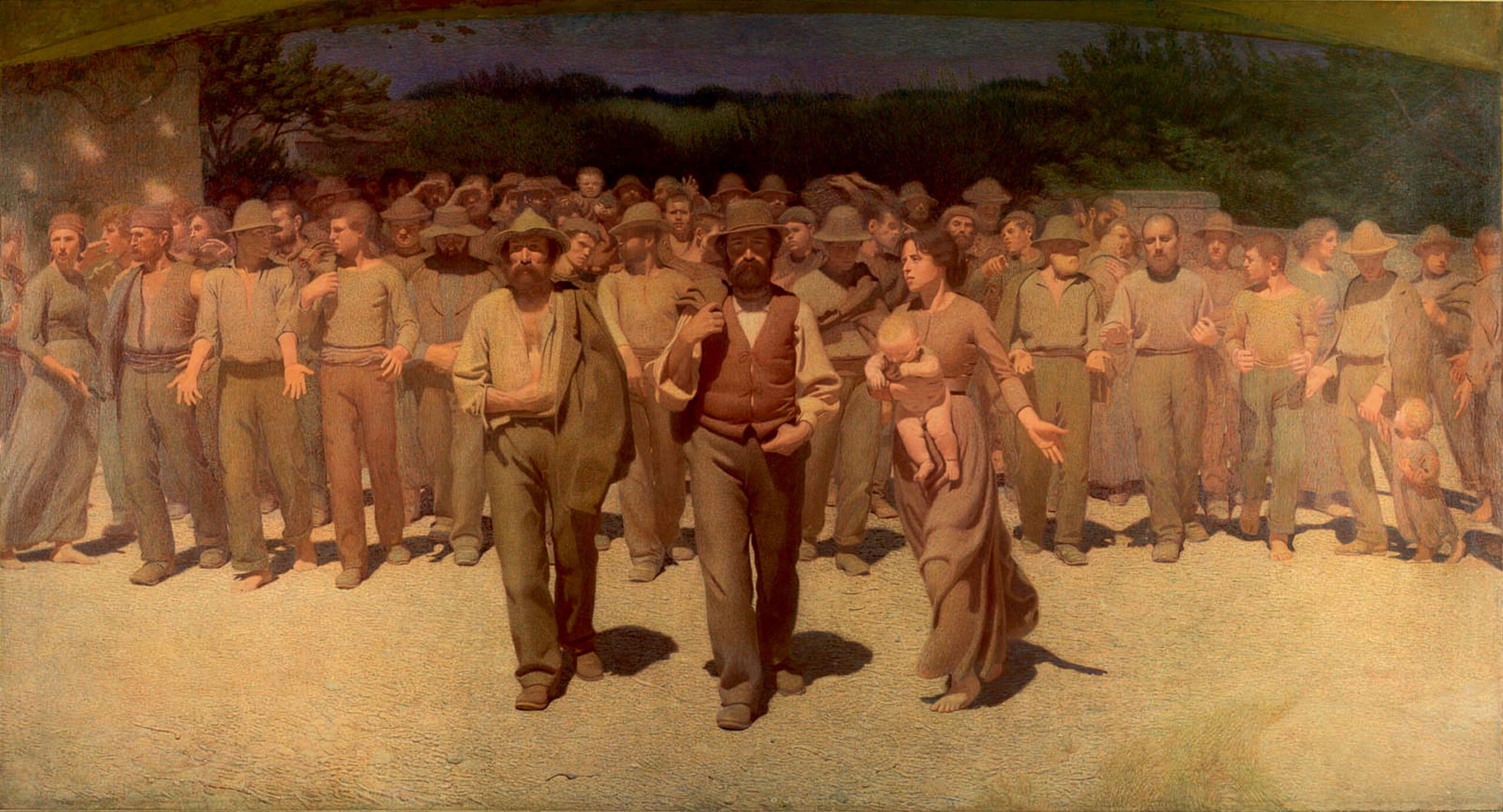By Anne Leader and Livia Lupi
Giuseppe Pellizza was born on 28 July 1868 in the Piedmont village of Volpedo. After a lengthy academic training, Pellizza turned to the neo-impressionist technique known as Divisionism by which he separated colors into patches, lines, and dots of pure color, applying them directly to the canvas for maximum brilliance and clarity. In 1894, Giuseppe presented his first Divisionist paintings, Speranze deluse and Sul fienile, which were unanimously praised by critics, collectors and artists.
Giuseppe also worked as a portaitist, realizing portraits of his parents and himself among others, but his most famous work is Il quarto stato (The Fourth Estate), a painting representing a large group of working class figures advancing towards the viewer. This picture, held at the Museo del Novecento in Milan, had a long gestation and was known under different names before its final title was chosen. Giuseppe started working on it in the early 1890s, deciding to attend lessons at the Istituto di studi superiori in Florence to address the technical weaknesses that he felt were in the way of this paniting’s realization. He also researched intently the lives of farmers and factory workers, becoming the vicepresident of Volpedo’s society for the support of the working classes. Il quarto stato was officially presented in 1902 in Turin, immediately becoming a socialist icon.
In 1906, Giuseppe moved to Rome for a period, where he met three key figures of twentieth-century Italian art: Giacomo Balla, Umberto Boccioni and Gino Severini. During the same year, Pellizza’s work obtained official recognition from the Ministry of Education, which bought the painting Il sole, realized in 1904, and from King Vittorio Emanuele III, who bought Lo specchio della vita, realized in 1898.
In spite of his success, Giuseppe Pellizza committed suicide in 1907, following the death of his son Pietro and his wife Teresa.
References: Aurora Scotti Tosini. “Pellizza da Volpedo, Giuseppe.” Grove Art Online. Oxford Art Online. Oxford University Press. http://www.oxfordartonline.com/subscriber/article/grove/art/T066109.
Davide Lacagnina. “Pellizza da Volpedo, Giuseppe.” Dizionario biografico degli italiani, Enciclopedia Treccani.
Further reading: Aurora Scotti, Lo Studio-museo di Giuseppe Pellizza da Volpedo e i luoghi pellizziani (1996)
Il quarto stato (The Fourth Estate), 1901, oil on canvas. Milan: Museo del Novecento.
Photographic Portrait of Pellizza.
Il sole (The Sun), 1904, oil on canvas. Rome: Galleria nazionale d’arte moderna.
Ritratto di mio papà (Portrait of my Father), 1889, oil on canvas. Volpedo: Studio-Museo Pellizza.
Self-portrait, 1899, oil on canvas. Florence: Uffizi Gallery.





